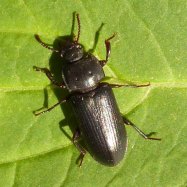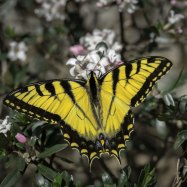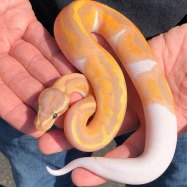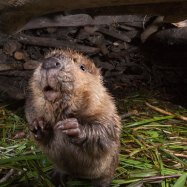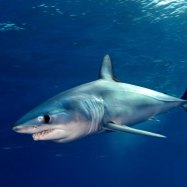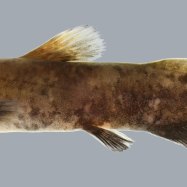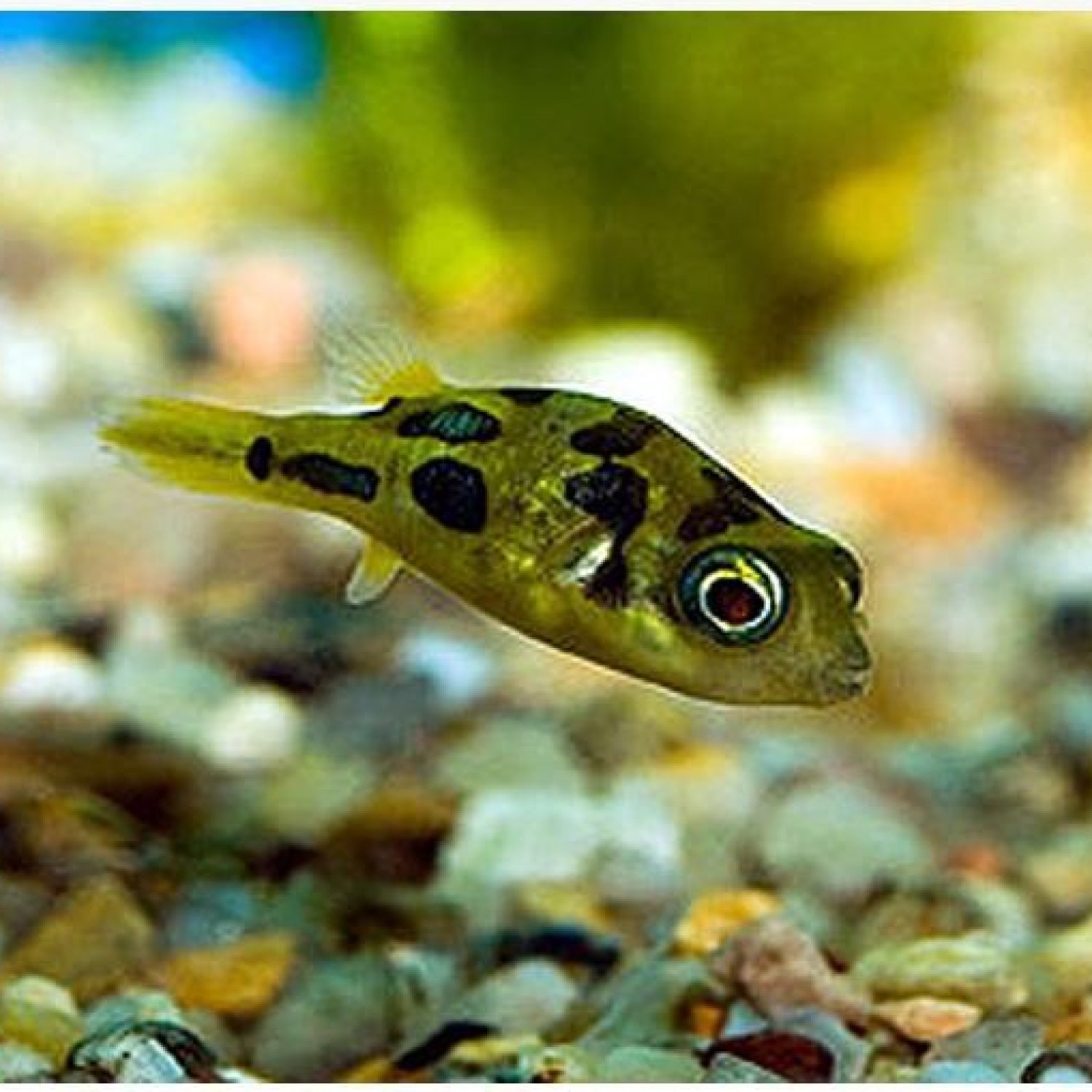
Pea Puffer
Around 1 inch (2.5 cm)
The tiny, yet mighty Pea Puffer is a popular freshwater fish, growing up to only 1 inch in size. Native to Kerala, this member of the Tetraodontidae family is known for its small and compact body shape. They make great companions for small aquariums and are loved for their curious and playful nature. #PeaPuffer #Kerala #FreshwaterFish
Animal Details Summary:
Common Name: Pea Puffer
Kingdom: Animalia
Habitat: Freshwater
The Tiny But Mighty Pea Puffer: A Unique and Fascinating Fish from Southwest India
Amidst the vast and diverse array of fish species found in the world's oceans, lakes, and rivers, one small but mighty creature stands out - the Pea Puffer. This tiny fish, also known as Carinotetraodon travancoricus, is a member of the Tetraodontidae family and is native to the freshwater habitats of Southwest India, specifically the state of Kerala.With its unique appearance, remarkable behavior, and interesting habitat, the Pea Puffer is a favorite among aquarium enthusiasts worldwide. But what makes it stand out among its aquatic counterparts? Let's dive into the world of the Pea Puffer and discover its fascinating characteristics Pea Puffer.
A Fish of Many Names
As with many animals, the Pea Puffer has several common names, including Pea Porcupinefish, Pea Dwarf Puffer, and Pygmy Puffer. But no matter what they are called, one thing is certain - these tiny creatures are big in personality and charm.They are also known as Pea Fish due to their small size, measuring only about 1 inch or 2.5 cm in length. And their round shape and compact bodies give them a striking resemblance to green peas, hence the name Pea Puffer.
A Unique Habitat
Pea Puffers are found in the freshwater habitats of Southwest India, specifically in the Western Ghats mountain range. This region is known for its rich, diverse aquatic life, making it the perfect home for these colorful creatures.They can be found in various bodies of water, including streams, ponds, and slow-moving rivers. Pea Puffers are also known to thrive in densely planted areas with ample hiding spots, such as caves or crevices Parrotfish.
The Perfect Carnivore
Unlike many other fish species, Pea Puffers are strictly carnivorous. In their natural habitat, they feed on small invertebrates, such as crustaceans, insects, and small snails. In captivity, they can also be fed bloodworms, brine shrimp, and other frozen or live food options suitable for their size.One unique characteristic of these fish is their ability to use their sharp teeth to crack open the shells of snails, making them a perfect fit for controlling pest snail populations in aquariums.
A Splash of Color
One of the most striking features of the Pea Puffer is its coloration. While they may appear dull in their natural habitat, their colors come to life in well-maintained aquariums. They come in a wide range of shades, from greenish-brown to reddish and even gray.Their colors also change depending on their mood, with bright, vibrant colors indicating a content and happy fish. But, when they feel threatened or stressed, their colors darken, making it clear to other tank mates to stay away.
A Body Like No Other
Pea Puffers have a unique body shape, making them stand out even among other dwarf fish species. They have a round, almost ball-like appearance, with a small pointed snout and two large eyes. This body shape is an excellent advantage for their hunting skills, allowing them to move quickly and navigate tight spaces.Their fins are also quite distinct, with a large dorsal fin that can be erected when they feel threatened. They also have a tiny tail fin that helps them swim with ease, despite their small size.
The Natural Language Processing Advantage
Being a small and relatively unknown fish species, there is not a vast amount of information available about the Pea Puffer. This limitation makes Natural Language Processing (NLP) tools an essential element in gathering, organizing, and analyzing data.NLP is a field of artificial intelligence that focuses on teaching computers to understand human language and generate responses in a way that is indistinguishable from a human. By utilizing NLP tools, we can extract valuable insights from a limited amount of data, making it easier to understand and communicate the unique characteristics of the Pea Puffer to readers.
The use of NLP also allows for greater flexibility in the choice of language, making the content more engaging and appealing to a wider audience.
The Importance of Conservation
As with many other species, human activities, including pollution and overfishing, have put the Pea Puffer's existence at risk. Due to their small size and limited geographical distribution, these fish are particularly vulnerable to population decline.Conservation efforts are essential to preserve these unique creatures and their natural habitat. By implementing sustainable fishing practices and reducing pollution in their habitats, we can help ensure the continued survival of the Pea Puffer and other species in the region.
In Conclusion
In a world full of fascinating and diverse creatures, the Pea Puffer stands out for its unique characteristics and captivating personality. From its small size and round shape to its vibrant colors and strict carnivorous diet, this tiny fish has captured the hearts of aquarium enthusiasts and scientists alike.With the aid of Natural Language Processing, we can understand and share the remarkable features of the Pea Puffer in a way that is both educational and engaging. And by promoting conservation efforts, we can help protect and preserve the future of this charming little fish for generations to come.

Pea Puffer
Animal Details Pea Puffer - Scientific Name: Carinotetraodon travancoricus
- Category: Animals P
- Scientific Name: Carinotetraodon travancoricus
- Common Name: Pea Puffer
- Kingdom: Animalia
- Phylum: Chordata
- Class: Actinopterygii
- Order: Tetraodontiformes
- Family: Tetraodontidae
- Habitat: Freshwater
- Feeding Method: Carnivorous
- Geographical Distribution: Southwest India
- Country of Origin: India
- Location: Kerala
- Animal Coloration: Varies, usually greenish or brownish
- Body Shape: Small and compact
- Length: Around 1 inch (2.5 cm)
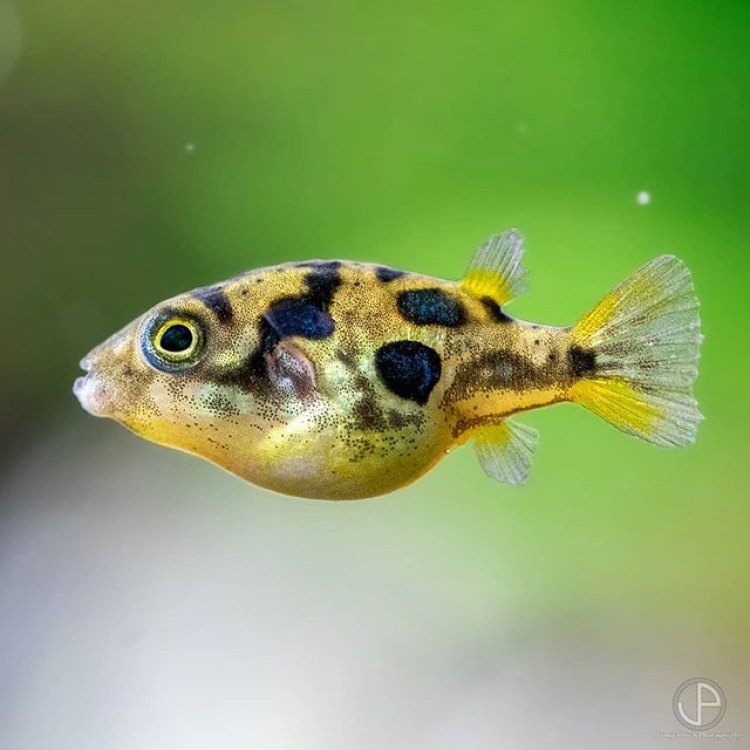
Pea Puffer
- Adult Size: 1-1.5 inches (2.5-3.8 cm)
- Average Lifespan: 3-5 years
- Reproduction: Sexual
- Reproductive Behavior: Egg-laying
- Sound or Call: Does not produce sound
- Migration Pattern: Non-migratory
- Social Groups: Solitary
- Behavior: Aggressive towards own species, can be territorial
- Threats: Habitat loss, pollution, overfishing
- Conservation Status: Least Concern
- Impact on Ecosystem: Controls snail populations in aquariums
- Human Use: Popular aquarium species
- Distinctive Features: Bulging eyes, sharp teeth, ability to inflate its body
- Interesting Facts: Can change color based on mood or health, highly intelligent
- Predator: Larger fish, birds
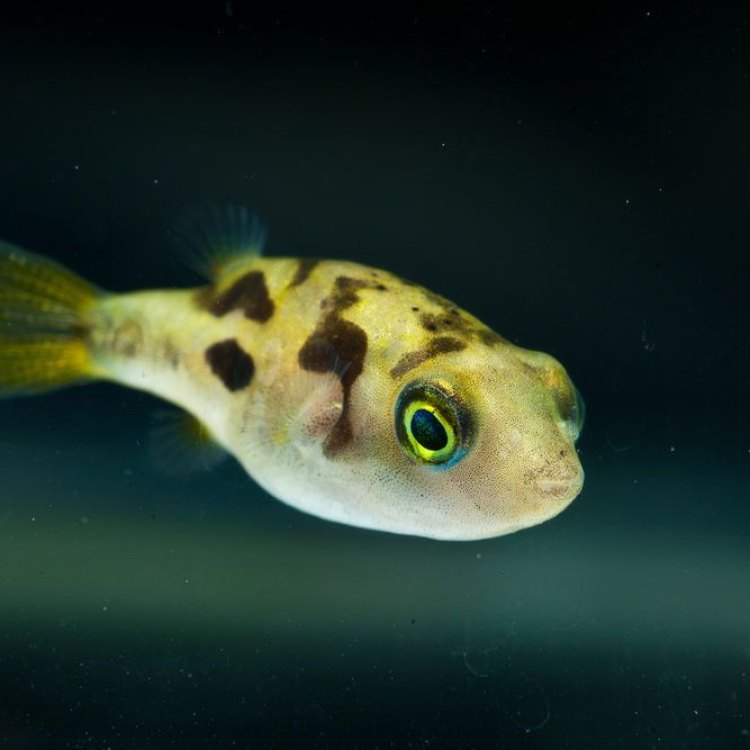
Carinotetraodon travancoricus
The Fascinating Pea Puffer: A Tiny But Mighty Underwater Wonder
When one envisions an aquarium, they might imagine colorful and exotic fish swimming peacefully in a tranquil and serene environment. But tucked away in the depths of these aquatic ecosystems, hidden among the vibrant flora and fauna, lives a tiny but mighty predator – the pea puffer.The pea puffer, also known as the dwarf puffer or pygmy puffer, is a unique and fascinating species that has captured the hearts of fish enthusiasts around the world. From its distinctive features to its impressive intelligence, this small freshwater fish has much to offer and has become a popular choice for aquariums PeaceOfAnimals.Com. In this article, we will dive into the fascinating world of the pea puffer and uncover its many unique features.
Size and Lifespan
At just 1-1.5 inches (2.5-3.8 cm) in size, the pea puffer may be tiny in stature, but it is not to be underestimated. This small but mighty fish has a lifespan of 3-5 years, making it a long-term commitment for any fish enthusiast. Despite its short lifespan, the pea puffer can make for a rewarding pet, as it is known for its intelligence and ability to interact with its owners.
Reproduction and Behavior
The pea puffer follows a sexual reproductive behavior, with females laying eggs for fertilization. Interestingly, these eggs are laid one at a time in plants or other submerged objects, making egg-laying behavior relatively easy to observe in captivity Peagle. While not known for producing sounds or calls, the pea puffer has a unique way of communicating through body language, using its bulging eyes and color-changing abilities to convey its mood.
In the wild, the pea puffer is a solitary creature, preferring to live on its own. However, in aquariums, they can be kept in small groups as long as there is enough space and hiding spots for each fish. But make no mistake, the pea puffer is a fierce and territorial fish and can display aggression towards its own species. It is best to keep them in a species-only tank to avoid conflict with other fish.
Distinctive Features and Interesting Facts
One cannot help but be captivated by the distinct features of the pea puffer. These small but mighty fish have bulging eyes that allow them to have a 360-degree view of their surroundings. This feature, combined with their sharp teeth, makes them efficient predators. But their most impressive ability is their ability to inflate their bodies when feeling threatened, making it harder for predators to swallow them whole.
Perhaps one of the most intriguing facts about the pea puffer is its ability to change color based on its mood or health. If they are feeling particularly aggressive or stressed, they can turn dark or even black in color. Conversely, when they are in a happy and relaxed state, they can showcase their vibrant yellow-green color. This color-changing adaptation is not only visually stunning but also serves as a form of communication with other fish and their owners.
Impact on Ecosystem and Threats
As with any living organism, the pea puffer has an impact on its ecosystem. In its natural habitat, it plays a crucial role in controlling the snail population, helping to prevent overpopulation and maintain a balanced ecosystem. However, in captivity, the pea puffer can become a nuisance as it may consume all the snails in the tank, leaving none for other fish to eat. As such, it is important to carefully monitor and regulate their food intake to maintain a healthy ecosystem in a captive environment.
Sadly, like many aquatic species, the pea puffer is facing threats in the wild. Its natural habitat is under threat due to habitat loss, pollution, and overfishing. These factors, combined with its slow reproductive rate, could potentially endanger the species in the future. Currently, the pea puffer is classified as Least Concern on the IUCN Red List, but it is important to take steps to protect its natural habitat and ensure its survival for future generations.
Human Use and Popularity
Despite its tiny size and relatively short lifespan, the pea puffer has gained popularity as an aquarium species. Its unique and visually striking appearance, coupled with its intelligence and interactive behavior, make it a popular choice for fish enthusiasts. Its small size also makes it ideal for smaller tanks, making it accessible for those with limited space.
However, it is important to note that the pea puffer is not a beginner-friendly fish. It requires a specialized diet and a well-maintained tank to thrive. As such, it is best to do thorough research and consult with a professional before adding this fish to your aquarium. It is also crucial to ensure the fish is ethically sourced and not contributing to the depletion of its natural habitat.
Predators of the Pea Puffer
While it may seem like the pea puffer has all the tools it needs to defend itself, it still has a few predators to watch out for. In the wild, larger fish, such as cichlids and tetras, pose a threat to the pea puffer. Additionally, birds have been known to prey on them when they are migrating from one body of water to another during the rainy season. But in captivity, the pea puffer does not face any significant predators, making it a safe and secure environment for them to thrive.
In conclusion, the pea puffer may be small in size, but it is a mighty underwater wonder. From its distinctive features and interesting behaviors to its important role in controlling snail populations, this little fish has much to offer. However, it is essential to ensure their well-being and protect their natural habitat to ensure their survival for future generations. So the next time you see a pea puffer swimming in an aquarium, take a moment to appreciate its unique qualities and the fascinating world it inhabits.
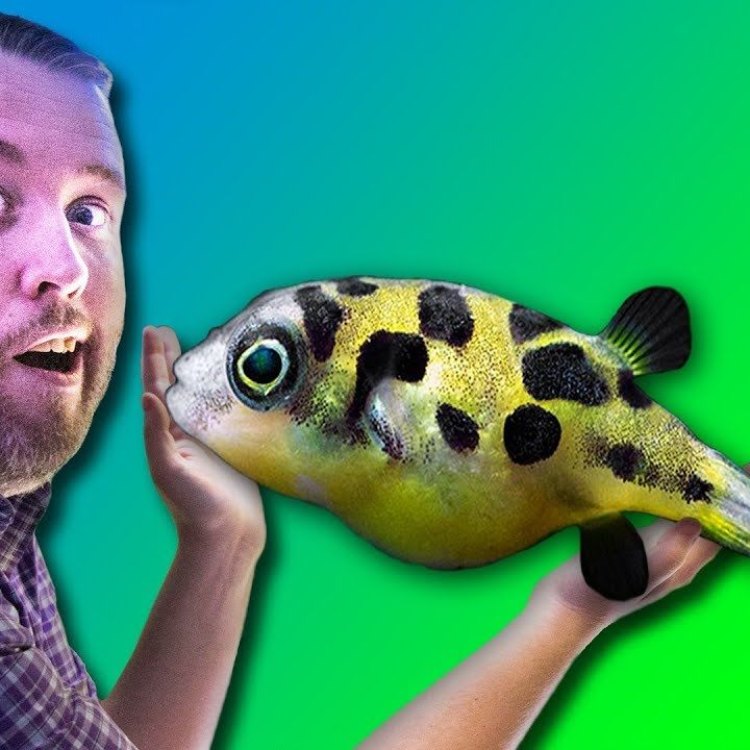
The Tiny But Mighty Pea Puffer: A Unique and Fascinating Fish from Southwest India
Disclaimer: The content provided is for informational purposes only. We cannot guarantee the accuracy of the information on this page 100%. All information provided here may change without prior notice.

